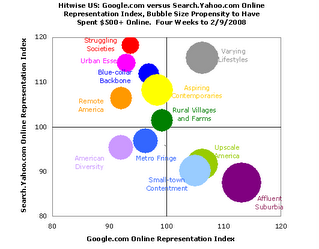Filed under: Graphic Design, Interaction Design, Internet Marketing | Tags: Design Tips, Reading List, Useful Link | Comments Off on Helpful Hints on Designing Websites to Sell Products
Smashing Magazine has an interesting article on the key points to consider when designing a website that has to sell a product. The suggestions range from the subliminal – putting pictures of happy people to welcome people in, through the theoretical – such as the Guttenburg principle of how our attention moves across and down a page, to the practical – always provide a next step for users to move to. Definately worth a read.
Filed under: Internet Marketing | Tags: psychology, Selling | No Comments »
Shops have always delighted in setting prices slightly below the full amount of a dollar or pound, and whether it’s 9.99 or 9.95 us consumers still feel it’s much better value. A new study has shown that this 1p or 5p saving still gets us by the purse strings, with a 15% increase in sales over the ‘full’ priced equivalent. But why is this? Psychologists talk about the perceived savings that affect our emotions much more than they should – and why our 40th birthday hits us more than our 39th. As emotional creatures we should not be surprised to be manipulated this way, and any shop keeper would be a fool to lose 15% of their business.
Ironically, in the US and Canada the price at $9.99 is not even accurate. Once you take your purchase to the checkout you’ll find tax has been added – around 8% in New York for example – making your purchase over the round $10.00 figure that is such a barrier. Of course by that point you already have the item in hand and you’re ready to go and as humans we hate to prove our own decisions wrong by putting the product back on the shelf.
Filed under: Internet Marketing | Tags: Internet Marketing | No Comments »
Internet marketing guru Seth Godin has another insightful post on how to conceptualize your marketing offerings as five simple pieces: Data, Stories, Products (services), Interactions and Connection. I’d been thinking about the ‘story’ (or myth) side of this equation for a while, but as usual Godin is four steps ahead of us all. Good stuff.
Filed under: Internet Marketing | Tags: Google, Internet Marketing, Searching, Statistics, Studies, Yahoo | No Comments »
Hitwise ran an interesting article yesterday about the difference in demographic between users of Yahoo and Google. They analysed a range of statistics, and their results indicated a couple of interesting points – firstly that Google users tend to skew slightly older (centering around 35-44 rather than Yahoo’s 25-34), and secondly that Google tends to be favoured by people who have spent over $500 online. In principle what this means is if you have a cheap product advertise on Yahoo, a more expensive product then advertise on Google to get better results.

You can read the whole article here.
Filed under: Internet Marketing | Tags: Distribution Models, Internet Marketing, Long Tail, Network Theory, Power of the Network, social networks, viral marketing | No Comments »
In the world of business the success of your idea depends hugely on word of mouth and feedback, especially with the Internet. The same is true of music, with new bands scrabbling to get any bandwidth with already saturated music lovers. In such a situation we often rely on music taste makers that we know and trust to point us towards new music we might like. This was a subject that Malcolm Gladwell discussed in his excellent book ‘The Tipping Point‘, where he described such people or groups as ‘super influencers’ who have an effect on many people’s opinions and can even make or break new products.
Well it seems not everyone believes Gladwell’s view of how information is dispersed. In a recent article Fast Company talks with Duncan Watts, a Network Theorist, on his own views of how information travels. He feels that information sharing in tightly grouped areas such as music depends much more on who gets the first attention, rather than who is referenced by the most connected people. This was found in an experiment where he set up new songs on a music sharing site, and then asked different groups to rate the music – but some of the groups had a social aspect, and others didn’t. What transpired was that the top rated list of songs was totally different for each group, there was no shared ‘best song’. The result for the ‘social’ world seemed to be driven more by who got the first votes, not who was actually best.
This result has some intuitive merit. In today’s social information networks, information that is tagged most rises to the top of display lists such as ‘Recent Top 10’ or similar. Other people then see these lists and give their own opinions on this music, perhaps biased by its position in the list, instead of going round all available music and seeing what they like. In this case the influencer is the social group en masse, rather than a single super influencer. Either way it seems that getting out there first with your product into a new area is critical, although as Watts says – “In general, the ‘best’ songs never do very badly, and the ‘worst’ songs never do extremely well, but almost any other result is possible&rdquo – so make sure your product is worthy of any attention is receives and you can’t go far wrong. Or if it’s not great, then make sure you can get feedback from this failed attempt to make sure the next one is worthy.
[From Boing Boing]
